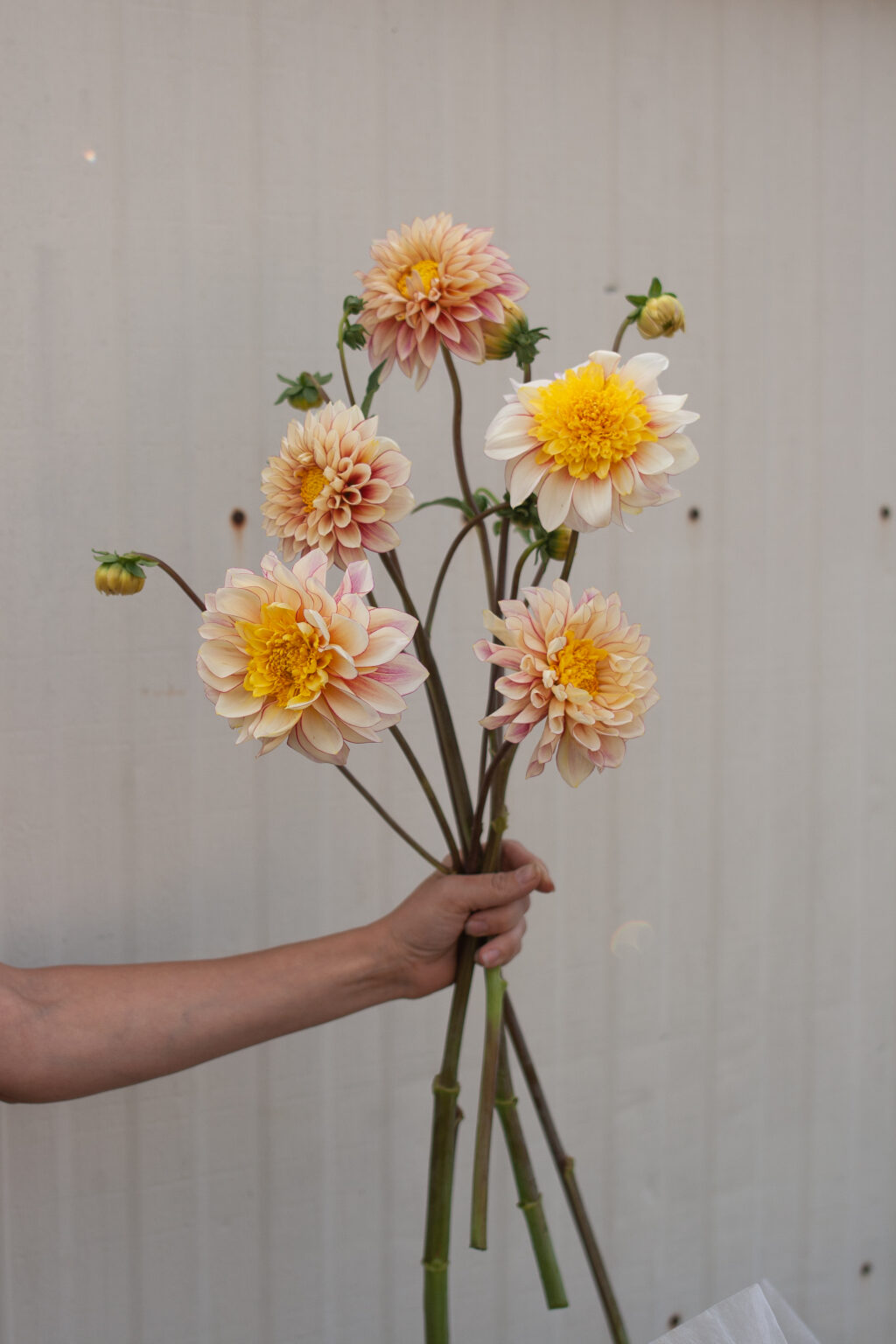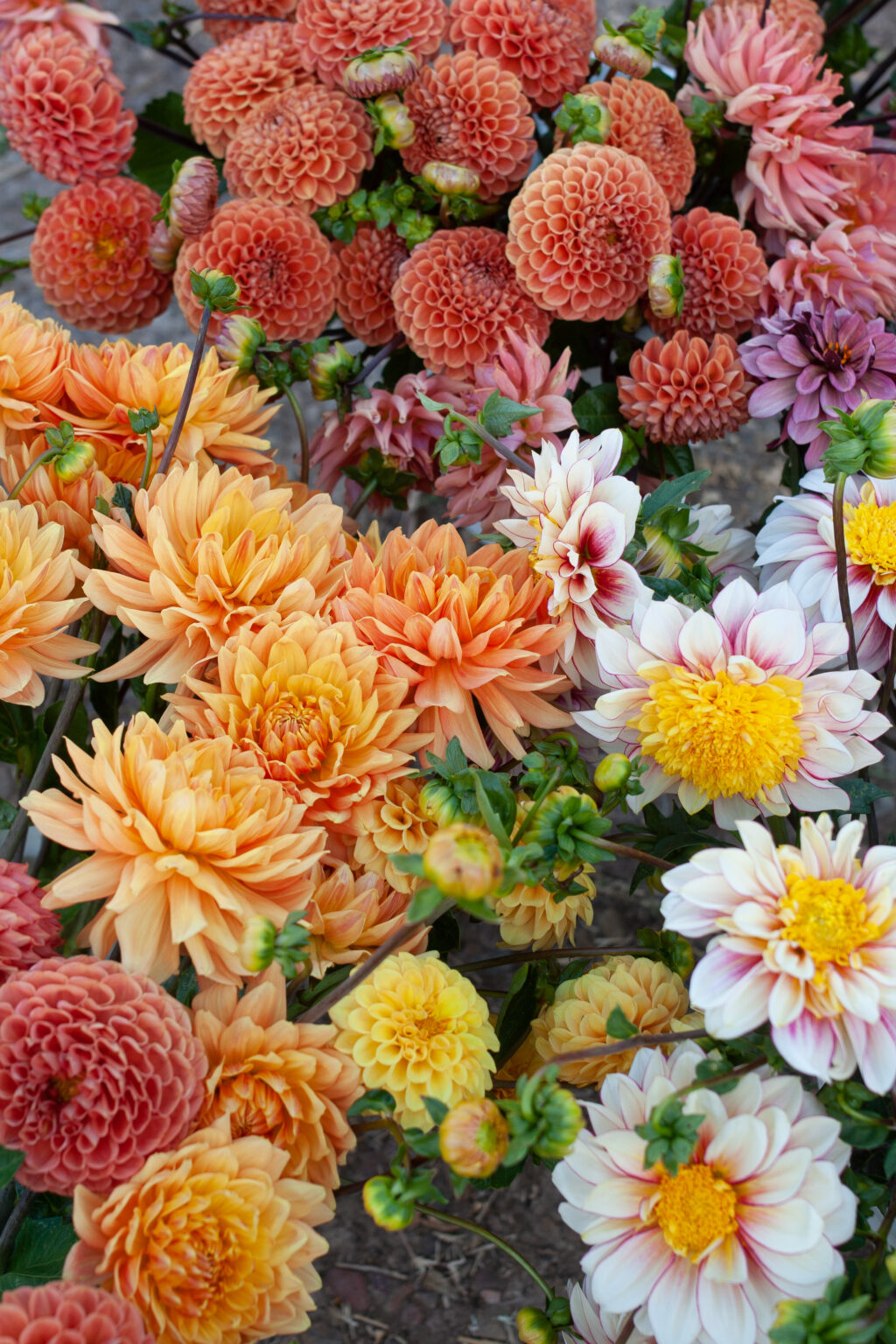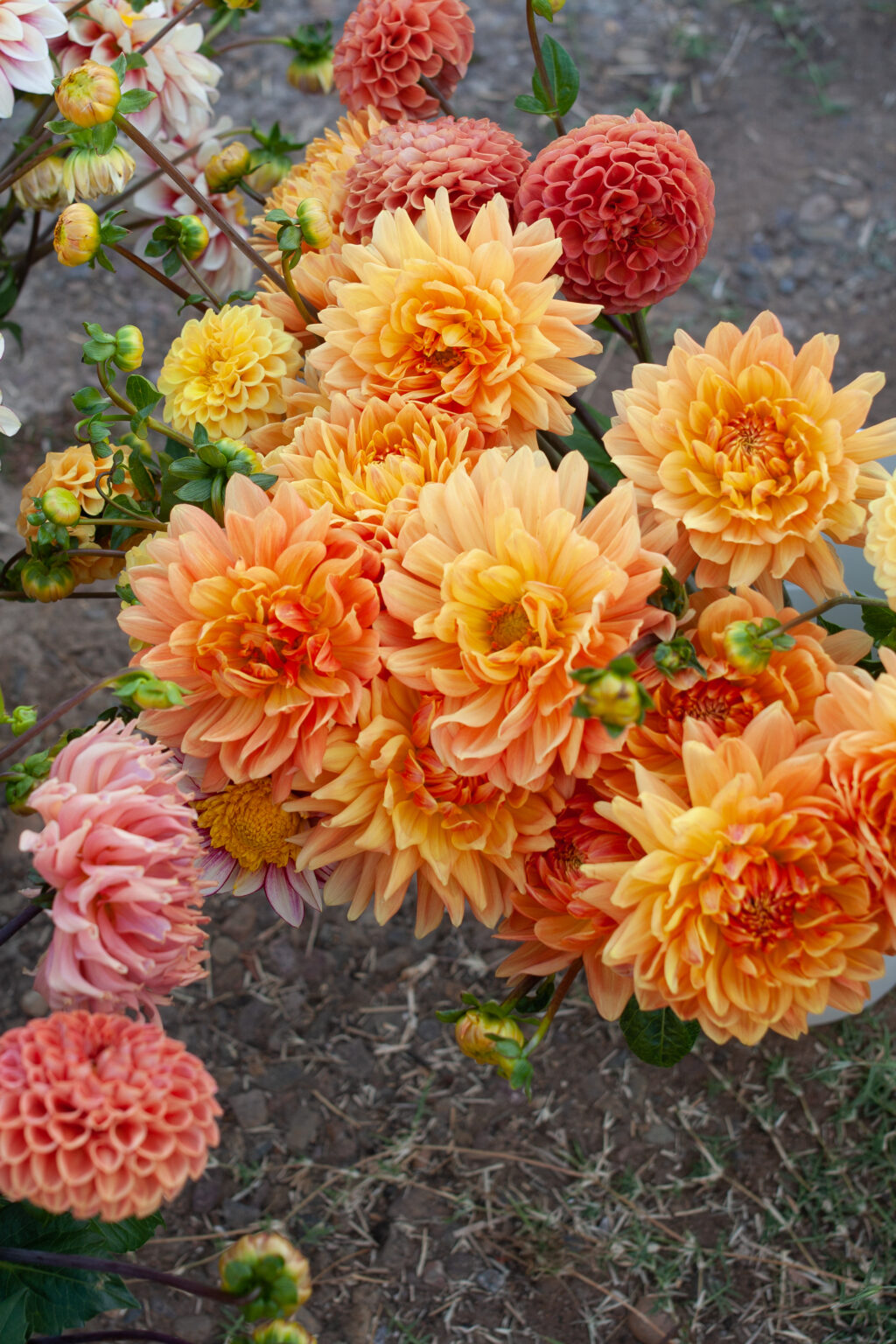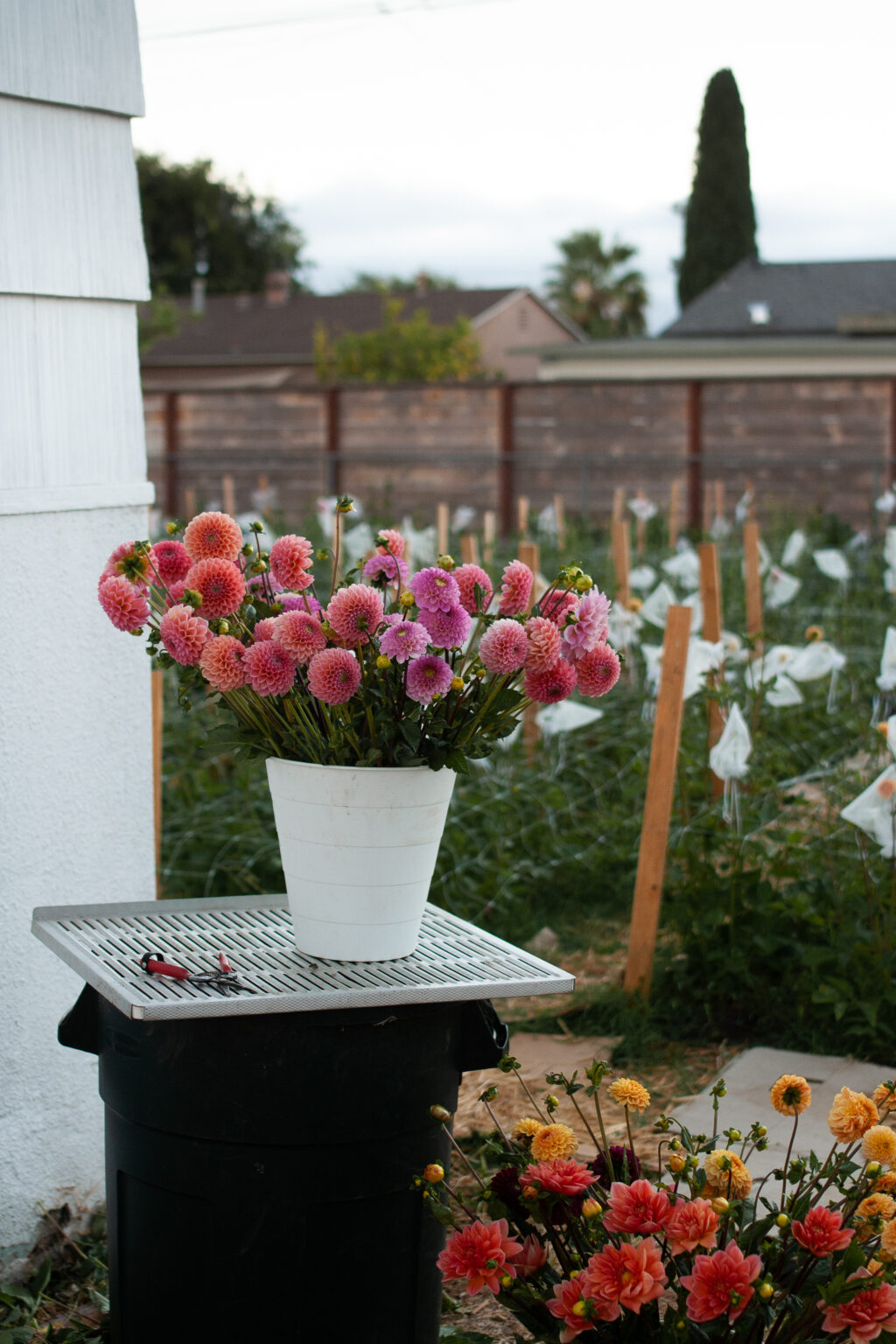
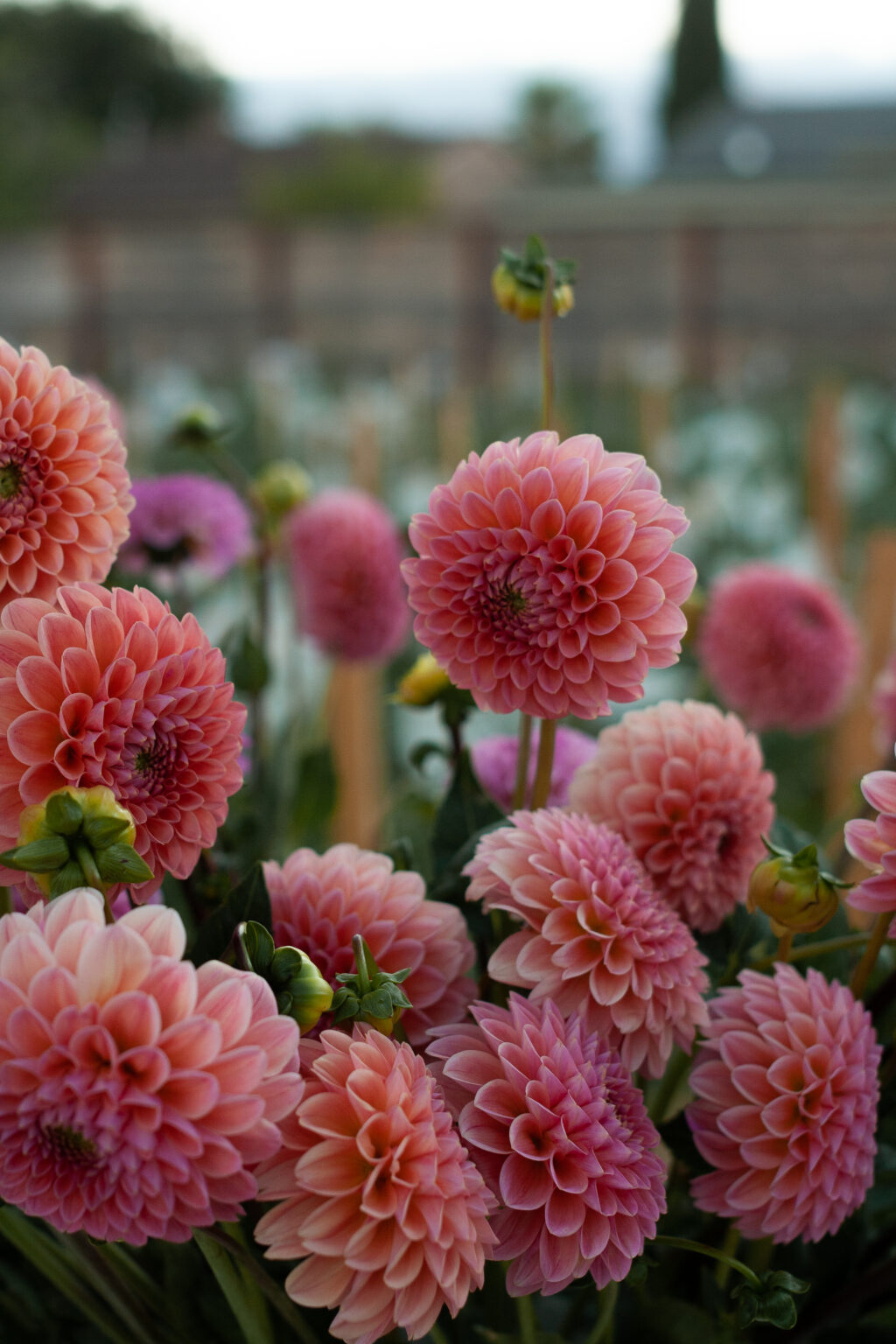
Six years ago, right around this time of year, I planted my first dahlia tubers in our backyard vegetable garden. At this time, farming had already “found” me and taken so much from me, like an unrequited love. We were making a home for ourselves again in the city after two years of farming vegetables and raising animals, all of which had amounted to just a good story chock-full of mistakes and disappointments.
The idea to grow flowers here in the city, in our neighborhood, sprouted from these first, incredible dahlias. The following spring, with little forethought and even less planning, I asked our neighbor across the street if I could use his side yard for a flower garden. His quick “Yes,” compounded with my unnerving hunger to farm and a desperation for land, snowballed into another neighborhood garden, then another. My model of growing flowers in neighbors’ yards was not well researched or executed, but through persistence and lots of hard work, and thanks to my neighbors, I have been able to continue to do this work years later and call myself what I have rightfully become, a flower farmer.
I don’t mean to promote flower farming necessarily or our unconventional way of going about it. I do think, though, that our farm’s slow, organic growth in our neighborhood is something beautiful, and if we are lucky enough, maybe the sort of agriculture Wendell Berry was envisioning in his 1983 essay, “People, Land, and Community,” where the farm is a kind of harmonious community dance born out of ignorant love, a place where the land is never overworked and the people are joined to the land, their bodies renewed, through work.
